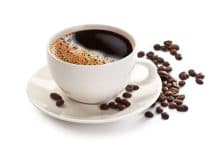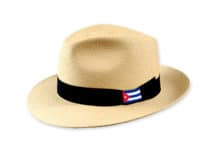
Contents
Cuban Tobacco or cigar, quality recognized worldwide.
Cuban Tobacco is part of the culture of the Cuban people, especially for those who see it from other latitudes of the world.
In that land excellent plantations are cultivated to make cigars, which after their exquisite elaboration are marketed to the world with great acceptance and recognized quality.
Although its original name is tobacco, on the island it is also called cigars or cigars, since all its raw materials are national and with strict control in the plantations and the production process so that the quality standards are high, to continue satisfying the taste. of its usual international consumers and other new followers who are joining.
Several natural and human factors influence and combine in Cuba that favor these plantations, among them the soil, the different varieties that are grown, the climate and the years of experience acquired by the tobacco growers of that Caribbean nation.
Seeds of these plants have been transferred to other nations of the world but harvests of such quality have never been achieved because the environmental and climatological factors of Cuba are very peculiar and suitable for tobacco.
The history of tobacco in Cuba
The origins of tobacco on that island go back two or three millennia before our era, perhaps for this reason when someone in that country is narrating something very long, they are told that they are telling the history of tobacco.
The first settlers of the nation who were the aborigines had this plant within their fundamental crops and used it for healing purposes and for their religious ceremonies.
After that land was colonized by the Spanish, they also transferred tobacco to various countries around the world, especially the European continent.
In the next few years, when the peasantry appeared, they were the main growers of the plant and by the 19th century there were more than a thousand tobacco factories in the country’s capital.
Over the years, Cuba consolidated its name as a tobacco producer in the international market and currently this is one of its main exportable lines with wide prestige in different continents.
There are many foreigners who, when they visit the island, do not leave it without smoking a good Cuban cigar.
The mixed company that today is in charge of the commercialization of the island’s cigars is Habanos S.A, which takes it to more than 150 countries.
Tobacco cultivation process in Cuba.
Although tobacco is produced in Cuba in various parts of the island, the fertile plains of Pinar del Río are among the most famous in the world.
To obtain tobacco plantations, the process begins when the seeds are deposited in the seedbeds for a period of approximately 40 days.
After this initial stage, the postures are transferred to the field, preferably in the month of October.
After planting in stages between 45 and 80 days, the leaves will be ready for harvest.
To dry and ferment them, the tobacco leaves are taken to the stringing sites, where the best ones are chosen according to their quality parameters and placed in the galleys for drying.
The destemming of the leaves is the next stage of the process, and there follows a new phase of classification according to type and size.
In the selection of Cuban Tobacco, the leaves are separated according to three different types: flown, light and dry, which are the ones used to make cigars.
Follow the aging or fermentation to remove from the leaves some products that are harmful to human health.
And then later it reaches the hands of the torcedores, who are the men and women in charge of making the cigars with their hands, but the story does not end there, later they are aged for another period of time to package them after they are classified according to their quality standards.
The best ones are placed in cedar wood boxes.
The Festival of the Habano or Cuban tobacco.
In March 2018, the 20th edition of the Habano Festival was held in the Cuban capital, an international event where the best examples of the product are exhibited and some awards are given, such as Business, Production, Habanos of the Year and Communication.
More than 2,000 people and accredited press from some 70 countries gathered, where Spain, Canada, France and Italy stood out in the commercial area.
Items such as humidors are also auctioned and the proceeds from this activity go to the island’s Public Health sector.
During the framework of the event, experiences are exchanged between producers, tobacco plantations, factories are visited and a special look is given to the best of the Premium cigars, on that occasion Cohiba and Partagás received the highest praise.
At the world event, the list of the best markets for Cuban cigars was updated, including Spain, France, China, Germany, Cuba, Switzerland, Lebanon, the United Arab Emirates, the United Kingdom and Canada.
At the festival, the Cohiba Robustos Reserva vintage 2014 and the Partagás Línea Maduro stood out among the many specimens destined for the world market.
Cuban tobacco brands.
In Cuba there are several types of tobacco but some of the most prestigious internationally are Cohiba, created in 1966 and Partagás, born a little earlier back in 1845 from the hands of the Spanish Jaime Partagás.
For 2018, the international corporation Habanos S.A put on the market the new line H. Upmann Robustos Añejados, these cigars were jealously guarded for five years so that they reached special and unique characteristics.
The popular Romeo and Juliet, Pirámides Añejados, Montecristo, Monterrey are also still on the market.
Where the best tobaccos are grown in Cuba
To obtain cigars of such excellent quality and so valued in the world, the plant is planted in very specific areas of the island, these plantations are called Vegas de Primera.
In the western region of Cuba, the most important vegas are in the Pinar del Río province.
The most prominent tobacco growing areas are Semi Vuelta and Vuelta Abajo with their districts San Juan y Martínez and San Luis.
In Vuelta Abajo, in particular, there is the best land to cultivate the tobacco plantations that are used in cigars.
In addition, all types of leaves that these cigars need are produced there. In its San Luis district, layer leaves are mainly found and leaves are selected from those vegas for the Cohiba brand.
The other district that provides leaves for the Cohiba family is San Juan y Martínez, where the famous Hoyo de Monterrey plantations are located.
Tobacco shop reader.
A peculiarity of Cuban tobacco factories is that they have a singular character who exercises the trade of tobacco shop reader.
This is a tradition that, according to scholars, was born so that the cultural level of tobacco growers would increase.
It is known that these male readers have done so since colonial times. They began to receive a remuneration that was collected from all the workers before the Revolution triumphed in 1959.
The story goes that at the beginning of the tradition one person did not do it all the time as it happens now, some chosen workers took turns from time to time until the job was carried out by only one person as it is today.
The tradition of the tobacconist reader is already more than 150 years old and has been a Cultural Heritage of the Cuban Nation since 2012.
In the present of tobacco factories, this special character performs several readings a day consisting of informative materials such as the flat press, they also share fragments of books and other texts that are interesting, educational and enrich the wisdom of those men and women who dedicate their life to turn the leaves into tobacco.







